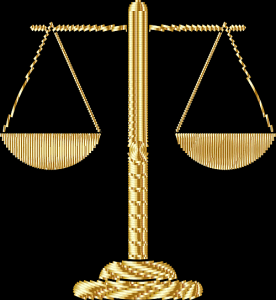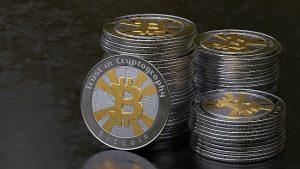What you will learn about bitcoin and cryptocurrencies
TABLE OF CONTENTS
-
- Bitcoin 101 – What is Cryptocurrency?
- What is a non-cryptocurrency?
- Cryptocurrency vs Fiat currency Comparison.
- Printing Currency vs Mining it.
- How currency is stored – Wallets
- Legal and/or Regulated?
- Why Use It?
- Who Invented Bitcoin?
- Who controls Cryptocurrency?
- What is the currency worth?
- How Do I Get Coins?
- Comments
 Welcome to the magical and mystical world of bitcoin and cryptocurrencies. From its creation in 2009, bitcoin has exploded in worldwide recognition.
Welcome to the magical and mystical world of bitcoin and cryptocurrencies. From its creation in 2009, bitcoin has exploded in worldwide recognition.
It would be hard to find anyone with an internet connection or who doesn’t live under a rock who has never heard of bitcoin or cryptocurrencies. Yet understanding of them is still extremely limited. By the end of this article, you will be able to talk somewhat intelligently about cryptocurrencies at cocktail and keg parties without embarrassing yourself. You will probably also be able to decide if you want to continue down your cryptocurrency journey or throw up your hands in disgust.
Just the other day Ellen DeGeneres tried to explain bitcoin. She didn’t hit the nail on the head – but good for her for trying.
In this very long post, we will try to cover all the basic concepts and explain all the fundamental topics of both, such as:
- What it is bitcoin/cryptocurrency, and a little history of its origin
- How to buy, use, store, and sell it
- Government issues such as bans, regulations, and taxes
- Related Scams and frauds
- Much more
Each topic discussed below will give you a somewhat brief but informative overview. In most cases, there will also be many links that you can click on to find longer, more complete and detailed explanation.
We will dive into both bitcoin specifically (because it is the oldest and most well known), and also cryptocurrencies in general. When something is true about one currency, but not the other, then we will attempt to point that out. So, unless otherwise noted, all references to cryptocurrencies also applies to bitcoin. But also be aware that there are almost 2000 cryptocurrencies as of today and so not every generalization will be true for all currencies.
In this text, for convenience and readability, we will use the terms:
- “cryptocurrency”
- “digital currency”
- “virtual currency”
- “cryptocoins”
They will be used interchangeably even though it can be argued that these are not all exactly the same thing.
Okay class, strap in and make sure you are feeling comfortable because this will be a lengthy discussion to try to explain a little bit about many things regarding bitcoin and cryptocurrencies. Comfy enough? Alright! Let’s get started.
Bitcoin 101 – What is Bitcoin & What is a cryptocurrency?

In this chapter, we will give you a 10,000-foot overview of bitcoin and cryptocurrencies. We will answer the most often asked questions regarding “what is cryptocurrency?”, using as few technical terms as possible. You will find all the technical stuff further down in your reading, and in the referenced links.
The original designers of bitcoin described their currency this way in their “Bitcoin White Paper” written in 2008.
“A purely peer-to-peer version of electronic cash would allow online payments to be sent directly from one party to another without going through a financial institution. “
This is how Merriam-Webster dictionary defines bitcoin.
We will greatly simplify the White Paper by saying that bitcoin in particular, and all cryptocurrencies in general, are “digital money”. This means that all cryptocurrencies are just data, ones and zeroes, which can be used to buy things. Unlike the physical coins and paper money you get from your local bank, cryptocurrencies have no physical representation. You can’t touch them. There is no real “coin”, nor paper cryptocurrency. This, despite the fact that the word “coin” is often used, and you have probably seen images of coins representing these currencies. They are just images and nothing more.
Although cryptocurrencies are generated, and moved, by computer programs, they [can be used to purchase real physical goods and services]. This ability to make purchases is what makes these “so-called” currencies actual usable real currencies. It is our mutual DECISION to use them in this way that makes them a currency.
⇒ WHY USE THE WORD “CRYPTO” CURRENCY? The “crypto” part of the name “cryptocurrencies” is due to the fact that each currency is protected by its own insanely complex mathematical algorithm called Cryptography, or Encryption. This ensures that each financial transaction is secure. The identity of the owner is not revealed and the transaction can’t be interfered with.
⇒ HOW IS THE GOVERNMENT INVOLVED? The generation, transactions, and accounting of these new currencies are [not controlled by any government]. But various governments are starting to exert various levels of control, such as
- Regulating them
- Taxing them
- Creating their own
- Banning them
Except in the very few countries where they are banned, cryptocurrencies are legal to buy, hold, exchange, and sell. Currently, there are few regulations, but this is a quickly evolving issue. We promise to stay on top of the changes and keep you informed with these pages.
⇒ IS IT A JOKE OR SCAM? Except for a minority of cases, cryptocurrences are NOT a scam, despite what you may have heard shouted by a few executives of huge banks and financial institutions. They are jumping up and down and having a tantrum to try to discourage use of cryptocurrencies. But behind the scenes, they are also trying to figure out how their company can get involved and profit from them. For example: Bank of America filed more patents regarding the fundamental technology of bitcoin than anyone else in the world.
The real threat related to cryptocurrencies is not the currencies themselves, but rather the bad guys who will try to steal your currency. [scams RELATED to cryptocurrencies] are not uncommon. For this reason, you DO need to be knowledgeable about all aspects of cryptocurrencies, and it is our job to help you be so.
⇒ WHAT IS THE PURPOSE OF CRYPTOCURRENCIES? Cryptocurrency transactions are designed to be:
- Fast
- Have low transaction fees
- Irreversible (you can’t change your mind once you press “buy-it-now”
- Private (no one knows the name of the people who made the transactions)
- Secure (can’t be hacked)
Note that I used the word “designed to be” – But not every goal is perfectly achieved.
⇒ HOW IS THE VALUE DETERMINED? The [value of a cryptocurrency] is determined by good old-fashioned capitalistic supply and demand. The maximum supply of most cryptocurrencies is permanently fixed to be one specific total amount of units of a currency. But the demand for those currencies changes second by second. Hence the value of cryptocurrencies changes by the second also.
⇒ WHAT ARE THE OTHER CRYPTOCURRENCIES? Although bitcoin is currently the most well-known cryptocurrency, there are now almost 2000 other cryptocurrencies in existence.
Almost all cryptocurrencies, except for bitcoin and a few others, are considered [“alt coins”] (meaning “alternate” coin. Many of these coins are very similar to each other in many ways. Other coins have taken unique approaches in their design to create the “best” cryptocurrency. Still others coins are designed for some unique use, rather than as a general purpose currency. Of these 2000 many will fail in their first year and/or never get any traction at all. They will not find enough people to purchase them and they will silently close their digital doors and fade away.
And now you know a few of the very basics. Read on for more specifics.
Return to TOC
What Is a “Non-Cryptocurrency”?

At this point, it might be interesting to get a very brief review of non-cryptocurrencies – like the currency you probably have in your physical wallet or purse today. In general, anything that we call “currency” is an artificial system of value. It has no inherent value in and of itself. Its value is typically bestowed on it by the governments who print it. It has value because that government says it has value, and for no other reason.
Money on the other hand stores intrinsic value within itself. Gold is an example of money. It has its own value due to its rarity and other desirable properties. It is called commodity money.
If you are really curious you can read about the fine differences between “money” and “currency”.
From 1000s of years ago, and up until the mid-1800’s gold and silver were the most commonly accepted type of money. But then, because gold was inconvenient to carry around, the US government for one started to print paper that simply represented gold. It could be redeemed for gold or exchanged directly for goods and services. The government was required by law to hold enough physical gold in its vaults to return to anyone who wanted to exchange their paper for the real thing. That system was called the gold standard. That lasted, on and off, until the early 1970’s.
Since that time paper currency can no longer be redeemed for gold. Now pretty pieces of government printed paper, with no direct physical value, have become the standard of currency in every country in the world.
Any physical representation of a currency that does not have inherent value (such as gold) is called a “Fiat” currency. This includes ALL printed money today. The term “fiat” is a Latin word that loosely means “it shall be true”. I.e. pretty paper shall have value because the government says “it shall be true”.
In these modern times, the only thing that really gives any nations currency value is supply, demand, and “trust”. Trust in that government who printed it to stay economically strong and not print “too much”.
Return to TOC
How is cryptocurrency similar & different to/from fiat (paper) currencies?

Do cryptocurrencies seem very strange and hard to wrap your head around due to their digital nature? If you think about it, even the typical fiat currencies you know today, for example, dollars, Euros, Yuan, or Pounds, are also most commonly digitally stored by and transferred between computers.
Think of your debit card. When you buy something do you ever actually see that currency being stored or transferred? The money is not IN your debit card. Your money is simply represented by ones and zeros in some centralized computer at your bank. Your card just allows you to spend that digitized money. Most of us have never actually SEEN the money that we are paid by our jobs – we only see the check that is handed to us at the end of two weeks – that check often can’t even be directly cashed. It is typically just a piece of paper to tell your employer’s bank to electronically transfer digital currency to your bank account. Then we get to spend that invisible digital currency with our plastic debit card which has a little computer chip inside.
A cryptocurrency is very much the same in this way. You will never see or touch it because you will always send and receive it electronically.
Here are a few more ways that fiat currencies and cryptocurrencies are similar:
- Can be used to purchase goods and services
- Can be exchanged for other currencies
- Can be earned at a job
- Value is based on supply and demand.
- Are a store of value for future use
- Both can make you very unhappy if you don’t have enough 😀
Here are a few ways that fiat currencies and cryptocurrencies are different:
- How they are created (fiat printing vs crypto mining)
- Maximum amount in circulation (fiat currencies have no limit. Cryptocurrencies are limited)
- Physical representation (you can touch fiat money, but not cryptocurrencies)
- CURRENTLY, only limited products can be purchased with cryptocurrencies (but this is fast changing)
- There is no “transaction-dispute” charge-back mechanism with cryptos. (After the transfer is complete, it is truly and forever complete.)
- Cryptocurrencies can be designed and created for a unique type of product/service vs fiat is a general purpose currency.
Read the sections below for more details about this differences.
Return to TOC
How currencies are created – Printing vs Mining

One of the differences between cryptocurrencies and fiat currencies is how the currencies are created. Fiat currencies are created by giant printing machines which run night and day in the basements of every country’s central banks. Governments print more money when and as they need. Sometimes the amount of printing is done intelligently and intentionally. This can be done to
- raise or lower the value of a currency to fight inflation of the prices of goods and services.
- make imports/exports more or less expensive to again control the economy.
- replace worn out old bills.
But unfortunately, all too often, the printing of new currency is done to pay the bills of an overspending government. This overprinting always has long-term negative inflationary consequences on an economy.
Cryptocurrencies, on the other hand, generate new units of currency through a process called mining. This, of course, has nothing to do with grungy men wearing hardhats and using picks. [Mining for cryptocurrencies] is the act of running a computer program which solves very complex mathematical equations. This mining can be done by ANYONE who wants to do it. Even you! But it is not a cheap nor easy way to earn bitcoin.
These equations are critical to facilitate the transactions for all purchases and to handle all the associated [complex cryptocurrency accounting]. This mining process also creates new currency which is received by the miner. This payment is in exchange for the miners time, effort and costs to successfully perform these essential mathematical tasks. These rewards for service is the only way that new currency is created and gets into circulation.
Each cryptocurrency has its own absolute limit of the maximum amount of currency that can be ever be generated. This limit is built into the software design of the currency and can’t be changed. The reason for this limit is to counter the inflationary process of overprinting a currency. Cryptocurrencies can’t be endlessly generated. Bitcoin has a limit of 21 million bitcoins.
Return to TOC
How currencies are stored – Wallets
 Fiat currencies can be stored in many ways since they can be both electronic and physical. They can be stored:
Fiat currencies can be stored in many ways since they can be both electronic and physical. They can be stored:
- In a banks centralized computer system
- In bank vaults, cash registers, and tin boxes
- In physical purses and wallets
Cryptocurrencies, on the other hand, use a very special type of currency wallet to keep track of your currency. What might be very unexpected about these wallets is that the wallets themselves don’t actually store your cryptocurrency. The wallets only store your unique account number(s) and the password(s).
Your currency is really stored in a world-wide electronic cryptocurrency account ledger. That account ledger, which contains the record of all your currency, is technically called the “blockchain ”. You need your wallet to access your currency in that blockchain account ledger.
We have used the commonly known words “account number” and “password” only to draw parallels to fiat currency. But this is not how you will typically refer to these numbers.
The correct cryptocurrency name of your account number is called your “public key”. This can also be referred to as you “currency address”. When someone wants to send money to you they will need to get your public key to make the transfer.
What we called your “password” is correctly called your “Private key”. You will have a unique private key for each unique public key.
It is these two paired keys, when used together, that unlock your ownership of your currency in the blockchain ledger. Once it is unlocked you can send your currency to someone else (if you have their public key).
After each currency exchange is complete the blockchain ledger will be updated to show that you now have more or less currency.
Now back to your wallet. A wallet that holds your keys needs to be compatible with the type of currency you own. This means that not every wallet is capable of holding the keys compatible with every type of currency. For this reason, you may have more than one wallet – and maybe many. Wallets come in many forms. Some are free and others are not. Some are physical wallets you can touch and others and online wallets which you can create yourself. Your choice of wallet for your currency will also depend on how safe you want it to be and how frequently you will want access to your currency.
You can read more in-depth details about [all the kinds of wallet options] here.
If you want to better understand how the accounting process works then read [how the blockchain ledger works]. You may also be interested to know [what part of your transaction is public knowledge and what is kept private].
Is cryptocurrency legal and/or regulated?

Some USES of cryptocurrencies are absolutely illegal – such as using it to traffic in illegal narcotics, weapons, and sex. But this same restriction is also 100% true of fiat currencies.
The currency has only been outright [banned in a very small number of countries].
Other then those limited cases, cryptocurrencies are quite legal.
But be aware that worldwide government positions on the currency are changing on a weekly basis. The impact of cryptocurrencies on fiat currencies worldwide can and will be quite dramatic. For this reason, all governments are taking a very close look at it to decide what will be in their best interest. Many governments are not yet sure if they want to allow it, or, if allowed, then how to regulate and/or tax it.
So far the vast majority of countries have not yet taken any concrete steps to control cryptocurrencies. But you can be sure that at some point in the near future every country in the world will make some sort of decision. Most likely that decision will be to simply try to regulate and tax it, but not ban it.
As of early 2018, no economically large country, other than [China, has put an outright ban on these types of currencies]. For our American readers, this includes the US government – i.e. it is not banned in the USA but it is taxable.
We believe that the tidal power of cryptocurrencies is rising way too fast, and the usefulness is way too significant, so that, ultimately, any bans on the currencies will be revoked. When all the dust settles we think you will find that all countries will have some sort of regulation and taxation plan in place, but no a ban.
You can read more specific details about [government bans and regulations of cryptocurrencies] here.
This is a situation that we are staying on top of and you will find up-to-date news on the subject here on our site.
Who And Why Would Anyone Use A Cryptocurrency?

You might have heard that only drug, sex, and arms dealers use cryptocurrencies. While, truth-be-told, that crowd does use it, but every year more and more, moms and pops and young adults are using digital currencies for a wide range of purchases, savings, and investments. And every year, more and more businesses will start accepting cryptocurrencies for purchases.
A few everyday examples are:
– Expedia for travel
– OverStock for home goods and apparel
– Pizza
– Donate to charities, such as United Way, without fees using bitcoin
– Or search with these tools for stores where you can spend your currency:
— CoinMap
— SpendBitcoins
Other examples are US state tax authorities accepting bitcoin:
– Arizona may soon allow payment of income taxes in bitcoin
– Georgia may allow bitcoin payments for taxes – Georgia Senate Bill 464
Use of cryptocurrency also appeals to many law-abiding citizens who:
- Distrust, or simply don’t like, banks.
- Prefer to keep their financial dealings as private as possible.
- Want to reduce identity theft
- Save money on international transfers and payments
There are those who even fear the potential (or actual) collapse of their national currency. This is going on right now in Venezuela which has a 10,000% inflation rate.
As cryptocurrencies become more commonly accepted, everyone will start to use them as easily as they use their current credit or debit card. Many people already have more than one credit card and a cryptocurrency will just be one more method to access their money.
The bottom line is that you don’t need to be in a huge rush to start buying and using cryptocurrencies unless one of the above points really appeals to you. But, I am almost certain that, over time, everyone will ultimately start using cryptocurrencies as they become commonplace.
Who invented bitcoin, when, and why?

This is the story of only one currency; bitcoin. In short, some person, or some small group, named [Satoshi Nakamoto invented the design of bitcoin] in 2008. They then [created the very first bitcoin in 2009]. But to this day no one really knows for sure who Satoshi Nakamoto is.
The bitcoin blockchain ledger contains a history of every single bitcoin transaction ever made. If you examine that publically available bitcoin ledger, you will discover Satoshi’s name associated with the very first bitcoin created in January of 2009.
There is also a bitcoin wallet associated with Satoshi’s name. That wallet contains access to billions of dollars of bitcoins owned by “Satoshi”. Interestingly they remain untouched since they were added. They have never been spent. No one has ever successfully claimed them.
Bitcoin was designed in 2008 during a time of intense international financial crisis. That crisis caused the near collapse of the worlds banking system. It is thought that that crisis could have been one (of) the motivations for creating bitcoin. The first bitcoin record contains comments mentioning that crisis. It could have been for that reasons that bitcoin was designed to be completely independent of the world’s banks.
You can read the all about the details of the bitcoin design in the “Bitcoin White Paper“:
The fundamental reason for creating bitcoin was to compete with, and possibly replace, the worlds traditional currencies. Bitcoin was also intended to offer the following additional benefits over traditional fiat currencies:
- Super low transaction fees
- Near instantaneous transaction settlements
- Anonymity of transactions to avoid both private and government snooping
- Limited supply to inhibit inflation
- Not reliant nor controlled by any government.
- Secure transactions to inhibit fraud and identity theft
Since the first coin was created in January 2009 it has rocked the world and we can’t even begin to fill you in on all the details. But we can tell you that bitcoin has taken off in popularity and value. The first coin had absolutely zero value. As of early 2018, a single bitcoin is fluctuating in price between $6000 and $12,000 USD. There are currently about 16 million coins in existence and there will never be more than 21 million coins ever created.
Who controls a cryptocurrency?

Who controls cryptocurrencies is an interesting question. I guess it really depends on what you mean by control. Does control mean the following things to you?
- Control of the value and exchange rate
- Control of the usage (ability to buy, sell, exchange)
- Control of the generation of additional currency
- Control of the accounting ledger
- Control of the ownership of the system and the coins themselves
Based on the above items, it is actually the individual bitcoin owners, and the independent miners, who control the currency. The [miners control the creation and accounting of these cryptocurrencies]. The currency owners control the usage and ownership. They both affect the [value of the currency]. Supply and demand drive the value of the currency. Miners provide the supply and buyers provide the demand.
To be clear, governments do NOT control cryptocurrencies. [Governments can regulate, tax, and ban cryptocurrencies], but they don’t control them based on the criteria we have listed above.
There are a few governments who are discussing or have already created, their own cryptocurrency. Such as:
But if they do, you can be sure that it won’t be the same as the currently existing independent currencies. A few of the most fundamental features of what should be considered a “real” cryptocurrencies will most likely be missing. Such as, there will be no privacy for the individual currency holders and there will be nothing from stopping those governments from creating an endless supply of coins. Just like they do with their paper currency.
These country-specific cryptocurrencies could become more common as time goes by. For this reason, we should probably distinguish between private independent cryptocurrencies and government cryptocurrencies.
What is a cryptocurrency worth, and why?

That is a great question and the one that everyone wants to know. From the time you started reading this article, until now, the price of bitcoin has already changed. And possibly changed significantly. Here is today’s value of bitcoin and all cryptocurrencies, compared to various major fiat currencies
No currency has an absolute value. The only value they have is a relative value compared to other currencies and what products you can buy with it. This relative value is its exchange value, agreed upon between buyers and sellers. It measures how many units of another currency you can exchange it for, or how many cows, cans of coke, or houses can you buy with it. That value is driven by supply and demand of the currency.
The price of Fiat currencies (like dollars, Pounds, Euros, Yen…) is also driven by supply and demand. But the supply and demand of these Fiat currencies can also be intentionally influenced by the respective government. World governments are constantly trying influence their own economy by controlling the value of their currency. They can print more currency, flooding the market, and drive the value down.
One reason to do this is to control foreign trade imbalances by making imports more expensive and exports cheaper. Another reason to print more is to pay government debt. This can cause inflation since the value of the currency is worthless so it takes more of the currency to buy a dozen eggs or a quart of milk.
[Cryptocurrencies values are also driven by this same supply-and-demand principle] except that cryptocurrencies have an absolute LIMITED supply, unlike fiat currencies. Governments are unable to create unlimited cryptocurrency. Even if a government set up their own mining shop to mine bitcoin they would be unable to force more bitcoins into the market. The bitcoin software alone controls the rate that the currency can be created. Cryptocurrencies can’t be manipulated by governments in this way.
What governments could do, if they wanted to influence (but not control) currency prices is to buy or sell the currency. That would affect the demand side of the equation. But nothing can affect the predetermined and planned supply side of cryptocurrencies.
For this reason, cryptocurrencies are not considered an inflationary currency since their supply is limited. The value of cryptocurrencies is purely driven by their limited and controlled supply, plus their real-world demand.
How Do I Get Coins?

Now that you are starting to understand all the critical basics of cryptocurrencies you are probably starting to think: “This sounds like a great concept! I think I want to get some, but how do I do so?”
Here are some of the most common ways you can obtain cryptocurrencies:
- Buy them
- Earn them
- Mine them
- Win them
- Do High-Frequency trading
⇒ Buying cryptocurrency
The easiest way to get your first coins is just to buy them. Many countries have digital currency exchanges but we recommend that you only deal with an exchange that has been around a while and has a good reputation. If you want to be even safer then you should consider using an exchange that is regulated by some government and is insured.
These regulations often ensure that an exchange company is on the up-and-up. The insurance will protect your funds if the exchange were to collapse. There is also some recourse if there is fraud at the exchange. This is not true of unregulated and uninsured exchanges. If something goes wrong there then your losses can be substantially higher. But be aware that regulations and insurance can’t protect you against buying a currency that naturally drops like a rock in value.
Just one single example of a well regulated, insured, and reputable exchange is Coinbase. Coinbase has detailed instructions on how to buy currency here. (note that we don’t receive any compensation from coinbase for this reference)
CoinBase is an exchange based in the USA. You can open an account and fund it easily with a bank transfer in US dollars or with a credit card. Although based in the USA, you can buy via Coinbase from many other countries. This exchange is a little more expensive than others, but you are paying for convenience and security.
Read about the [many other cryptocurrency exchanges]
You can also buy currency from a Cryptocurrency ATMs.
Another option is to buy currency directly from another individual owner of currency. But you need to be careful about this to avoid being scammed. We will write an article about this at some future time.
Before you open an account, you should research the [best cryptocurrency to buy]. The vast majority of cryptocurrencies will probably fail within the next 12-24 months. Be intelligent and research your choice. Don’t just jump into any currency simply because it is well hyped, or you fear losing out on the craze.
⇒ Earning cryptocurrency
There are some freelance job websites that pay in cryptocurrencies. Also, some companies that are involved in cryptocurrencies in some way or another, such as currency exchanges, often offer employees payment in cryptocurrency as an option.
⇒ Mining cryptocurrency
As mentioned a few times, you can [mine cryptocurrencies]. In exchange for the service of mining, you will get paid in cryptocurrency. This can have an expensive upfront cost to buy all the advanced computer equipment necessary, and the electricity cost can be massive. You can also simply pay to lease time on someone else’s mining equipment. You can find the mining computers for purchase and the cloud mining opportunities on the internet. We will also be posting an in-depth article on this subject.
⇒ Cryptocurrency gambling
Although we don’t recommend gambling with your money, we will acknowledge that this is an option. Just do your research and don’t be scammed. Also be aware of your own countries gambling regulations.
⇒ High-frequency trading
You can be a high-frequency cryptocurrency trader by buying and selling as you try to ride waves of the constant ups and downs of a currency. This is a very risky venture and should only be attempted when you are extremely knowledgeable on the subject – that is unless you can afford to lose all your money.
⇒ DISCLAIMER
Note that ownership of cryptocurrencies can be a risky endeavor due to the fast-moving and dramatic price changes. So we are only telling you about some of the ways that you can get involved. We are not specifically recommending that you do so, but if you do then be sure to do more research, don’t rush into a purchase, and only use money that you can afford to lose. Don’t mortgage your house.
There you have it, friends! A very long and, hopefully, informative, yet simple overview of most of the questions that you may have had regarding cryptocurrencies. I hope you enjoyed this article and learned a thing or two. If you would like to get updated weekly news, then please sign up for our newsletter. We will be providing a weekly summary of what went on in the world regarding cryptocurrencies delivered to your inbox. You can also return to this site frequently to find our latest educational articles.
